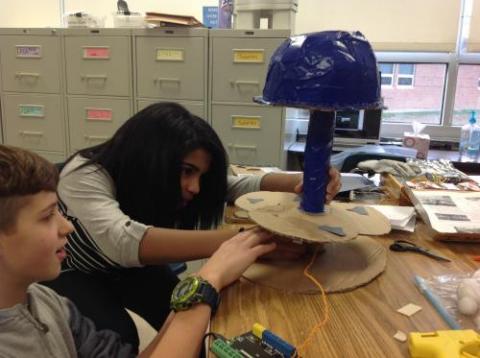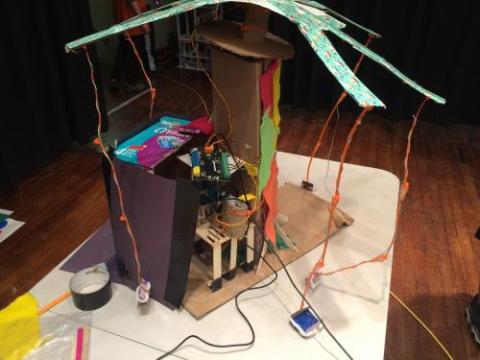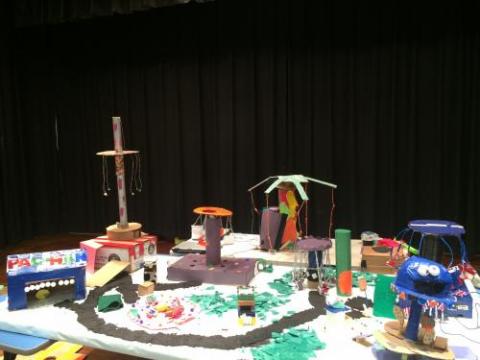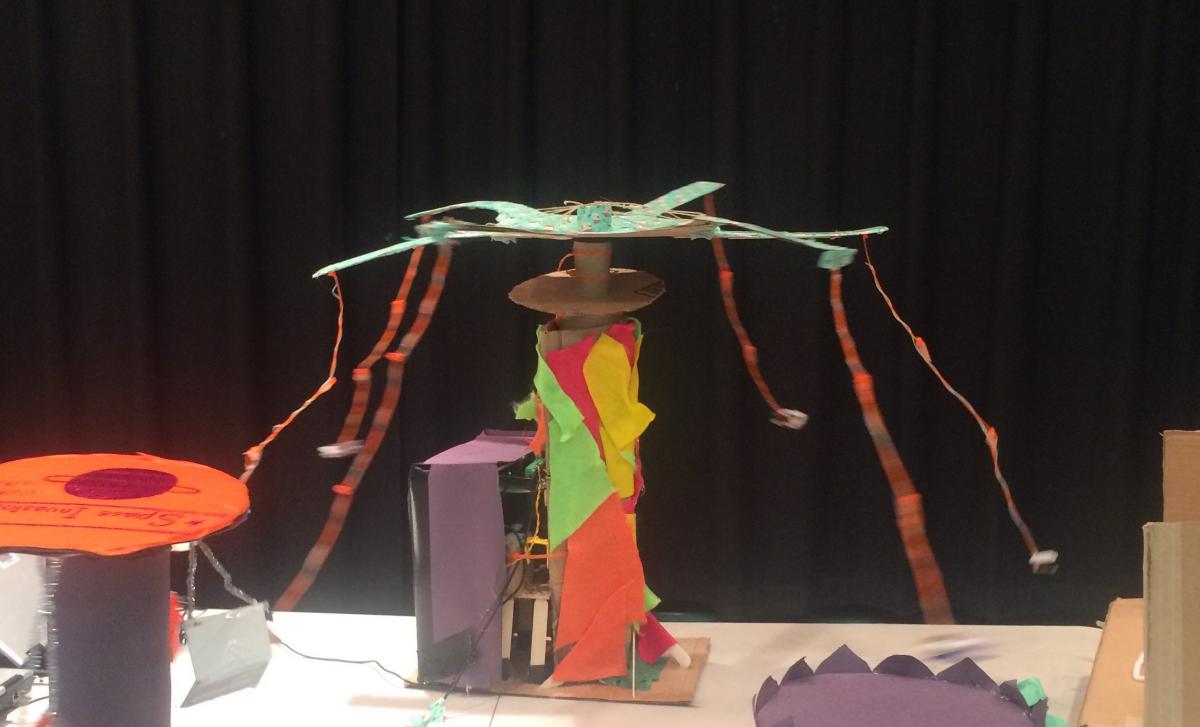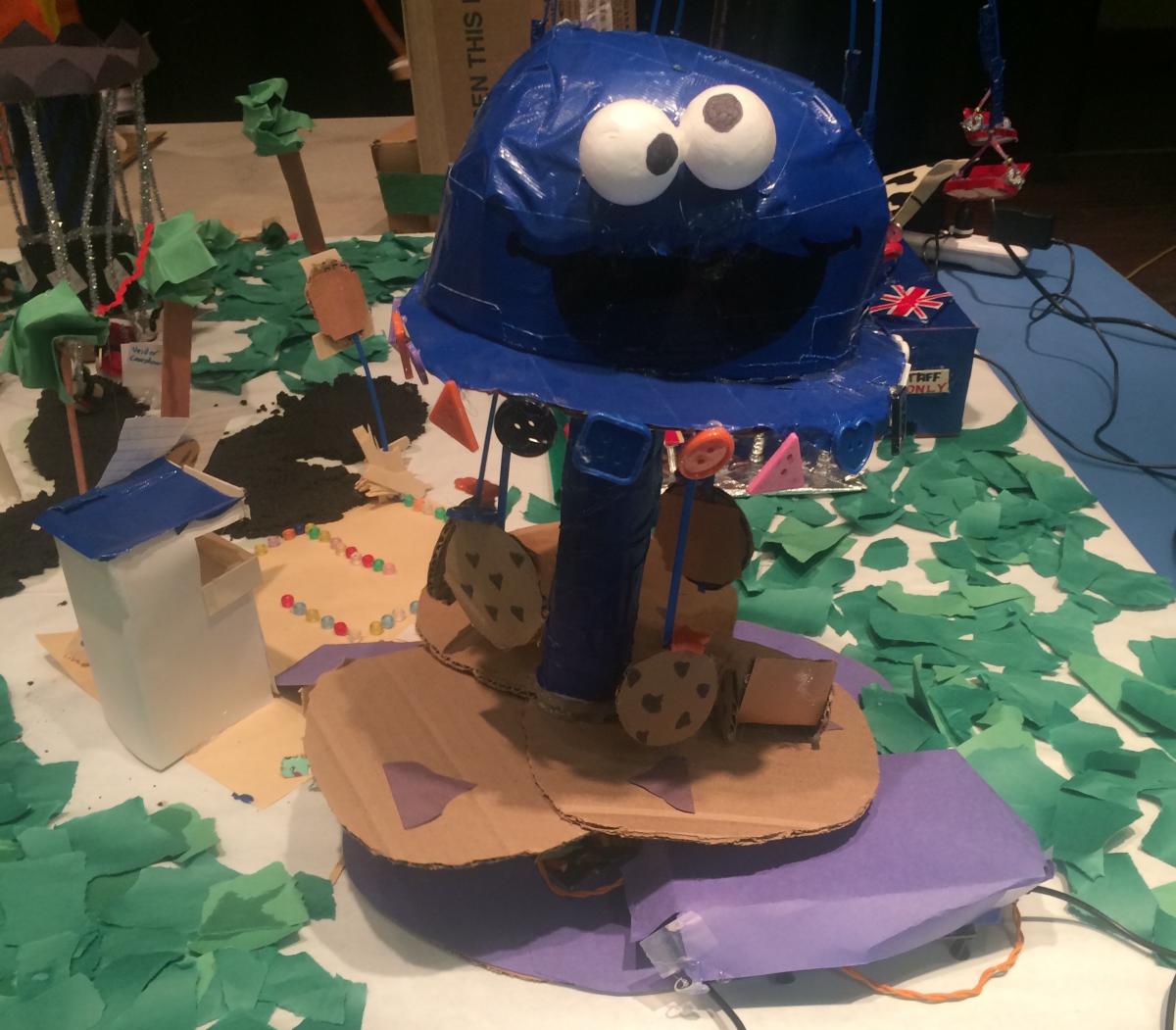Amusement Park Physics
Subjects
Math, Science, Maker
Project Type
Real World Models
Required Tutorials
Position servo or Rotation servo
Estimated Time
Long (6+ hours)
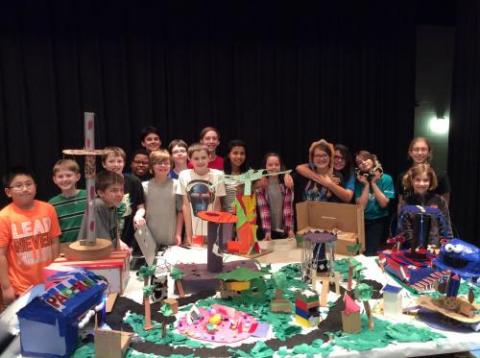
Description
Build three amusement park rides using the Hummingbird kit.
Free Teacher Materials
Teacher Credit
Michael Weidinger, Rebecca Dieffenbach, and Will Bennett of Queens Lake Middle School
Project Map
Learning Goals
- Students will build three amusement park rides using the Hummingbird robotics kit. Each ride will focus on a particular physics concept: a pendulum, centripetal force, or centrifugal force.
- Students will program their rides using Snap!, BirdBlox, or MakeCode.
- Students will compare and evaluate their peers’ work using challenge-specific rubrics.
- Students will use team journals to record their progress and ideas allowing them to communicate from one week to the next.
- Students will track supplies used and extrapolate a total expense for their team project.
Materials
- Hummingbird Premium Kit
- Shoe box or paper towel tube
- Possible Craft supplies
Tips
- Have students work in groups of 2-3.
- Our Printables page has a variety of documents for making teaching and learning with Hummingbird easier. Visit and explore resources like the My First Robot Design Notebook now.
Steps
Lesson Procedures:
This project is set up as a series of three challenges. Students work in groups of 3-5, and each group keeps a written log of their work. At the end of each challenge, each group presents their work, and all students rate the presented rides using rubrics. These rubrics can be used to determine which rides are kept for an end-of-project display; other projects should be carefully dismantled to prepare for the next challenge.A range of programming languages could be used for this challenge. Safety precautions, including the process for signing out sharp blades, are emphasized throughout the project.
Challenge 1: Pendulum Ride (5-7 hours)
In this challenge, students build a pendulum ride, which consists of a boat that swings riders back and forth. The goal of this challenge is to introduce students to building and programming with the Hummingbird robotics kit. As they learn the basics, students will compare the servo motor and the gear motor before choosing which motor is most appropriate for this task. Students then design and build a pendulum ride that fits within a 12” by 12” area. Full details for this challenge are given in Challenge 1.
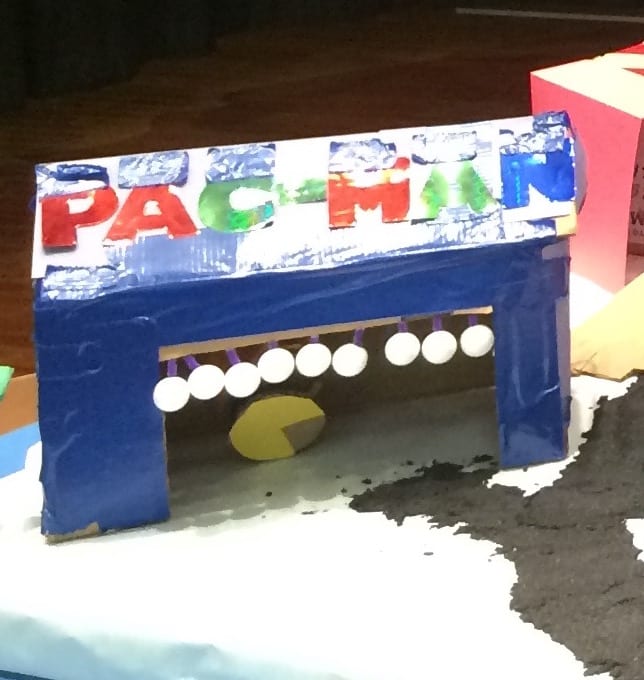
Challenge 2: Centripetal Ride (7-9 hours)
In this challenge, students design and build a centripetal ride such as a carousel. Students are introduced to the idea of centripetal force and use a gear motor to create a rotating platform. The rotating structure must be balanced and symmetric to rotate properly. This challenge also requires the tracking of supplies to reduce waste, as well as the introduction and use of a team journal so that members can plan and communicate from one session to the next. Full details are given in Challenge 2.

Challenge 3: Swing Ride (9-11 hours)
In this challenge, students design and build a ride with swings suspended from a platform that rises and tilts. The physics concept behind this ride is centrifugal force; students are introduced to the idea that a moving object moves in a straight line unless a force restrains it. Students must use one motor for rotation while another motor raises the rotating platform. Linearly raising the platform requires mechanisms such as a system with a crankshaft, connecting rod, and piston. A third motor can be used to tilt the platform.
This is the most mechanically advanced challenge. For this reason, students prepare and submit their designs before they begin to build the ride. They continue to document their work in team journals. Students also track the supplies that they use and use material costs to derive a total cost for the project. Full details are given in Challenge 3.
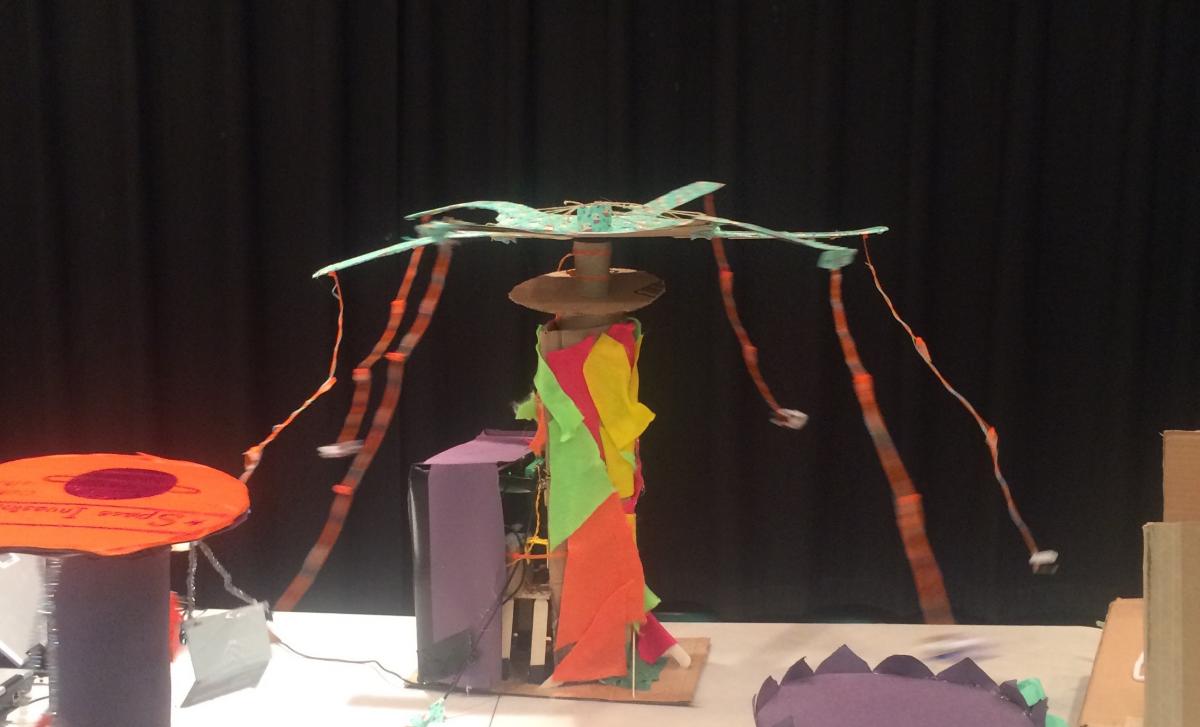
Standards Alignment
This project is aligned with the middle school engineering standards in the Next Generation Science Standards (MS-ETS1-1, MS-ETS1-2, MS-ETS1-3, and MS-ETS1-4). Students design solutions that satisfy problems with constraints, and they test and improve their designs. In addition, this project satisfies NGSS standards that focus on force, motion, stability, and energy (MS-PS2-2 and MS-PS3-5; disciplinary core ideas PS2A: Forces and Motion and PS3B: Conservation of Energy and Energy Transfer). This project also meets Common Core math standards that involve decimals and solving multi-step real-world problems (6.NS.B and 7.EE.B). Finally, project presentations are aligned with Common Core ELA standards in speaking and listening (CCRA.SL.1-CCRA.SL.6), while the process of documenting the project addresses middle school ELA standards in writing (CCRA.W.2 – CCRA.W.4 for grades 6, 7, and 8).

